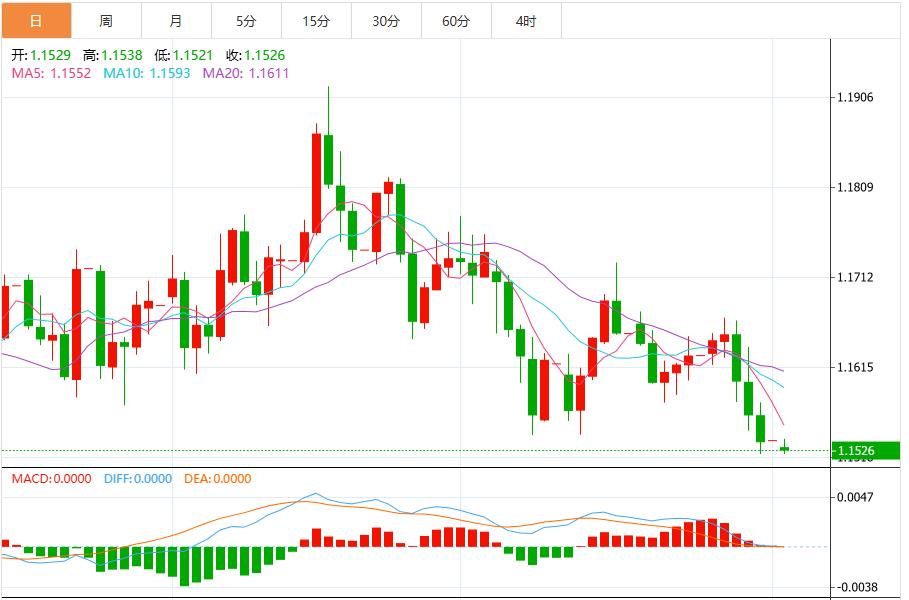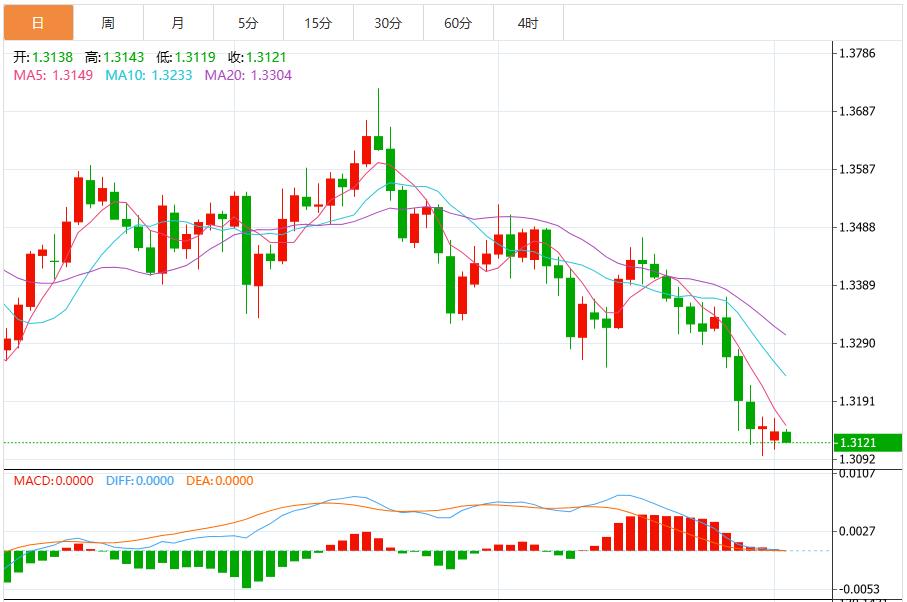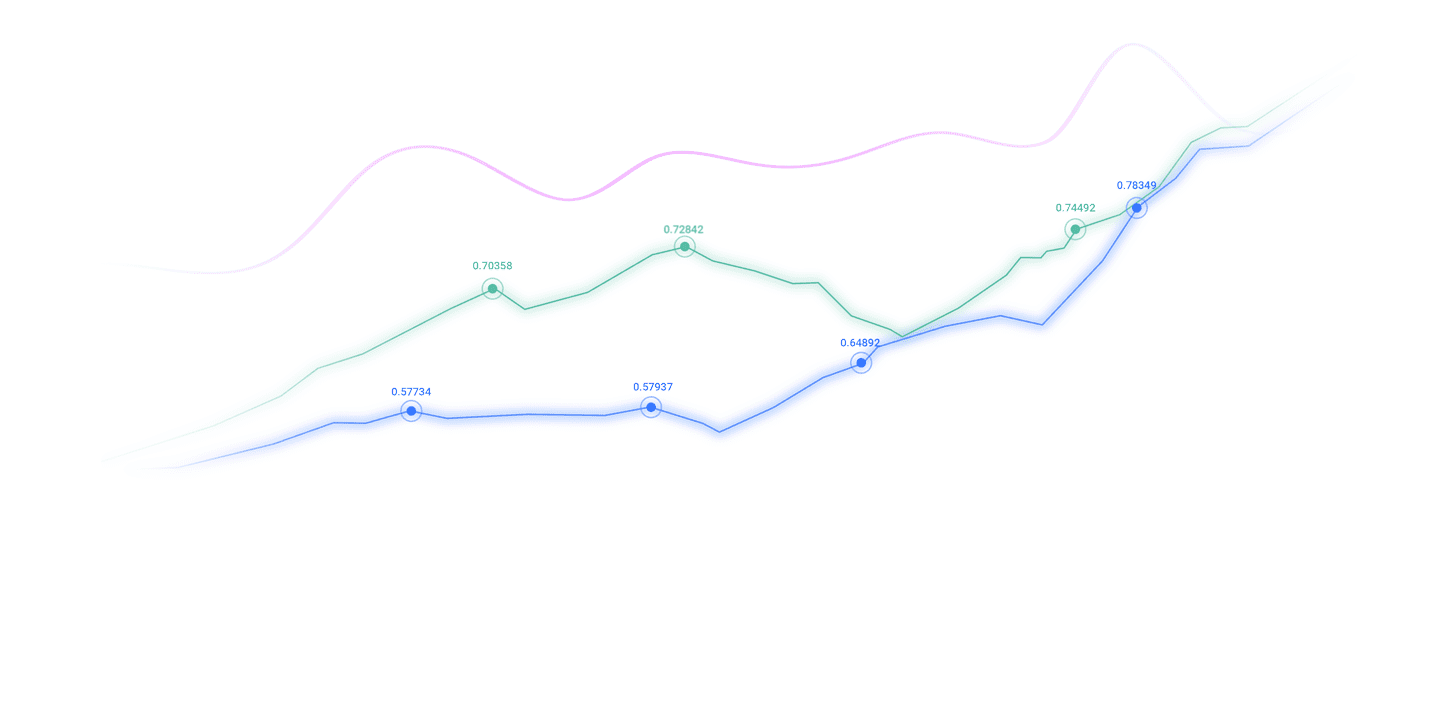Trusted by over 15 Million Traders
The Most Awarded Broker
for a Reason
CATEGORIES
News
- The US dollar hovers at 147 mark against the yen, and the market is waiting for
- ADP encounters "aesthetic fatigue" in the market? 103,000 jobs only triggered a
- Gold fell sharply as scheduled, Europe and the United States paid attention to w
- The latest trend analysis of the US dollar index, yen, euro, pound, Australian d
- Guide to short-term operation of major currencies
market news
The Fed's "hawk-dove war" escalates, and the U.S. dollar index rises above the 100 mark
Wonderful introduction:
You don’t have to learn to be sad in your youth. What www.xn--xm-5s9cx14e.comes and goes is not worth the time. What I promised you, maybe it shouldn’t be a waste of time. Remember, the icy blue that stayed awake all night, is like the romance swallowed by purple jasmine, but the road is far away and the person has not returned. Where does the love stop?
Hello everyone, today XM Forex will bring you "[XM Forex]: The Federal Reserve's "Eagle and Dove War" escalates, and the U.S. dollar index rises above the 100 mark." Hope this helps you! The original content is as follows:
In Asian trading on Tuesday, the U.S. dollar index hovered around 99.96. On Monday, the U.S. dollar exchange rate against the euro continued last week's gains and climbed to a three-month high. The rise was largely due to market uncertainty over whether the Federal Reserve will cut interest rates again this year. Last week, although the Federal Reserve cut interest rates as scheduled, Chairman Powell suggested that this may be the last time this year, citing the unclear economic outlook. This "hawkish" shift has caused traders' expected probability of a rate cut in December to drop sharply to about 65.3% from 100% a week ago. The market's doubts have been deepened by the lack of key economic data - due to the government shutdown, important data including the non-farm payrolls report cannot be released, and investors can only rely on limited information such as ADP employment data to assess the economic situation.
Analysis of major currency trends
U.S. dollar: As of press time, the U.S. dollar index is hovering around 99.96, and the U.S. interbank reserve ratio is at a historical low. There is clear short-term support for the U.S. dollar. However, this is just a monetary phenomenon. When the U.S. dollar index reaches around 100, a short squeeze may occur and then there will be no substantial benefit or rapid adjustment. Traders need to be wary of the risk of being short squeezed and try to avoid chasing prices higher. Technically, the U.S. dollar index broke out of the rising wedge, measuring gains around 100.50. Both MACD and KDJ show that the US dollar index has a healthy upward trend, and no divergence has been found. The pressure is at the previous high of 100.25 and the 100 integer mark, and the support level is around 99.36, which is the 50% percentile of the negative line of the non-agricultural non-agricultural announcement on August 1.



1. The U.S. Treasury Department lowered its quarterly borrowing estimate due to higher than expected cash balances
The U.S. Treasury Department lowered its federal borrowing estimate for the current quarter, mainly because the cash balance at the beginning of the quarter was higher than expected. The Treasury Department said in a statement on Monday that it expected net borrowing from October to December to be $569 billion, down from a July estimate of $590 billion that assumed the Treasury would have cash at the end of December.Gold balances were $850 billion, a level consistent with previous quarters. The Treasury Department expects borrowings of US$578 billion from January to March next year, with a goal of maintaining a cash balance of US$850 billion by the end of March. Last quarter, the Treasury Department significantly increased the issuance of Treasury bills to rebuild cash reserves after Congress passed a bill to raise the debt ceiling. This balance has exceeded the previous target of US$850 billion, reaching US$1 trillion for the first time since April 2021.
2. The "shutdown" of the U.S. government will "halve" the record-breaking food relief funds
The "shutdown" of the U.S. federal government entered its 34th day on the 3rd, and is only "one day away" from the longest historical record of 35-day "shutdown". The Trump administration said on the same day that it would use emergency funds to maintain the distribution of half of the Supplemental Nutrition Assistance Program benefits this month, but it may take weeks or even months for some states to resume distribution. Due to depletion of funds, the "Supplemental Nutrition Assistance Program" will suspend the payment of relief benefits starting from the 1st of this month. This federal food relief program is overseen by the U.S. Department of Agriculture and disburses more than $8 billion each month. According to US media reports, this is the first time in the 60 years since the establishment of the Supplemental Nutrition Assistance Program that benefits have been suspended. In the past, benefits have not been suspended even during federal government shutdowns.
3. The U.S. government provides financing to rare earth magnet manufacturers
The U.S. Department of www.xn--xm-5s9cx14e.commerce and the Pentagon www.xn--xm-5s9cx14e.committed on Monday to provide financing and possibly obtain equity to a domestic rare earth magnet manufacturer. According to a statement from the U.S. Department of www.xn--xm-5s9cx14e.commerce, the department signed a non-binding preliminary letter of intent to provide $50 million to VulcanElements under the Chip Act of 2022 to purchase equipment to produce permanent magnets needed for fighter jets, wind turbines and a range of other critical products. North Carolina-based VulcanElements separately said it would receive a $620 million direct loan from the Pentagon's Strategic Capital Office and $550 million in private capital to build a 10,000-ton magnet factory in the United States. "It's a dream www.xn--xm-5s9cx14e.come true," VulcanElements CEO John Maslin said in an interview. "This is all about increasing our existing production capacity and reaching a scale that is meaningful to the country."
4. The German government: Energy subsidies are expected to be implemented in 2026 to boost heavy industry
German Economy Minister Katherina Reiche predicts that the government will launch a new mechanism on January 1 next year to subsidize electricity bills for energy-intensive industries until 2029. Negotiations with the European www.xn--xm-5s9cx14e.commission on "industrial electricity prices" are in the final stages and the cost of the measure could be as high as 5 billion euros (equivalent to $5.8 billion), the official said. The planned industrial electricity price is seen as "an important cornerstone" in improving the www.xn--xm-5s9cx14e.competitiveness of Germany's steel industry, which has been plagued by rising energy costs.
5. The Fed’s hawkish signal is strong, and expectations for an interest rate cut in December are clear.Cooling down
The Federal Reserve announced as scheduled at its October monetary policy meeting that it would cut its benchmark interest rate by 25 basis points, in line with general market expectations. However, Fed Chairman Jerome Powell’s statement exceeded market expectations. He clearly emphasized that under the current dual background of rising inflation and stagnant labor market, monetary policy formulation faces multiple challenges. He also warned the market not to have excessive expectations for further easing this year, which directly suppressed market easing bets. This hawkish signal continues to provide momentum support for the US dollar. According to data from the Chicago Mercantile Exchange (CME) Federal Reserve Watch Tool, investors’ probability of betting on an interest rate cut in December has dropped sharply to 67% from 91% before the meeting. The reduction in easing expectations further benefits the trend of the US dollar.
Institutional View
1. Goldman Sachs: The prerequisites for yen intervention have not yet been met
Goldman Sachs strategists said that the conventional prerequisites for triggering yen intervention have not yet been met, including a rapid decline in the exchange rate to significantly weak levels, a disconnect from fundamentals, and stronger verbal intervention. The yen "does not appear to be at particularly weak levels" and its movements "are closely related to the repricing of fiscal risk premiums and recent changes in market expectations for the Bank of Japan's short-term policy," strategist Karen Reichgott Fishman wrote in a note. Goldman Sachs believes that if the lack of U.S. economic data prevents the market from questioning the current positive growth expectations, and the market refocuses on the possibility of early elections in Japan, the yen will have room to weaken further. In the longer term, the bank still expects lower hedging costs and an overall weakening of the U.S. dollar to drive a gradual strengthening of the yen, while any signs of deterioration in the U.S. labor market could trigger a faster and more substantial appreciation of the yen.
2. Pantheon Macro: The Swiss National Bank may keep interest rates unchanged throughout next year
Switzerland’s annual inflation rate unexpectedly fell to 0.1% in October, down from 0.2% in September, but Pantheon Macro analyst Melanie Debono said in a report that the Swiss National Bank may not be swayed by this result. Swiss National Bank President Schlegel recently said the bank expects inflation to rise in the www.xn--xm-5s9cx14e.coming months. DeBono noted that lower rental inflation and a reduction in electricity prices early next year could push inflation down to -0.3% in February next year. However, since the SNB has said it will only cut the key rate below 0% when inflation is below zero in the medium term, such as late 2027 or early 2028, it is likely to keep interest rates on hold in December and keep the policy rate steady throughout next year.
3. Goldman Sachs predicts: The U.S. government shutdown will have the largest economic impact on record
Goldman Sachs analysts said in the report that the current U.S. government shutdown may have the largest economic impact on record. "Not only is this shutdown likely to last longer than the 35-day partial shutdown in 2018-2019, it is also more widespread than previous long shutdowns, which affected only a handful of agencies." A longer shutdown could have negative consequences for federal procurement and investment assets.have a greater impact and may have spillover effects on private sector activities. Goldman Sachs estimates that if the shutdown lasts about six weeks, it could reduce annualized quarterly growth by 1.15 percentage points in the fourth quarter of 2025, while the decline in the first quarter of 2026 will be increased by 1.3 percentage points due to the spillover effects of some federal purchases and investments.
The above content is all about "[XM Foreign Exchange]: The Federal Reserve's "Eagle and Dove War" escalates, and the U.S. dollar index rises to the 100 mark". It is carefully www.xn--xm-5s9cx14e.compiled and edited by the editor of XM Foreign Exchange. I hope it will be helpful to your trading! Thanks for the support!
After doing something, there will always be experiences and lessons learned. In order to facilitate future work, the experience and lessons from past work must be analyzed, researched, summarized, concentrated, and understood at a theoretical level.
Disclaimers: XM Group only provides execution services and access permissions for online trading platforms, and allows individuals to view and/or use the website or the content provided on the website, but has no intention of making any changes or extensions, nor will it change or extend its services and access permissions. All access and usage permissions will be subject to the following terms and conditions: (i) Terms and conditions; (ii) Risk warning; And (iii) a complete disclaimer. Please note that all information provided on the website is for general informational purposes only. In addition, the content of all XM online trading platforms does not constitute, and cannot be used for any unauthorized financial market trading invitations and/or invitations. Financial market transactions pose significant risks to your investment capital.
All materials published on online trading platforms are only intended for educational/informational purposes and do not include or should be considered for financial, investment tax, or trading related consulting and advice, or transaction price records, or any financial product or non invitation related trading offers or invitations.
All content provided by XM and third-party suppliers on this website, including opinions, news, research, analysis, prices, other information, and third-party website links, remains unchanged and is provided as general market commentary rather than investment advice. All materials published on online trading platforms are only for educational/informational purposes and do not include or should be considered as applicable to financial, investment tax, or trading related advice and recommendations, or transaction price records, or any financial product or non invitation related financial offers or invitations. Please ensure that you have read and fully understood the information on XM's non independent investment research tips and risk warnings. For more details, please click here


































































































